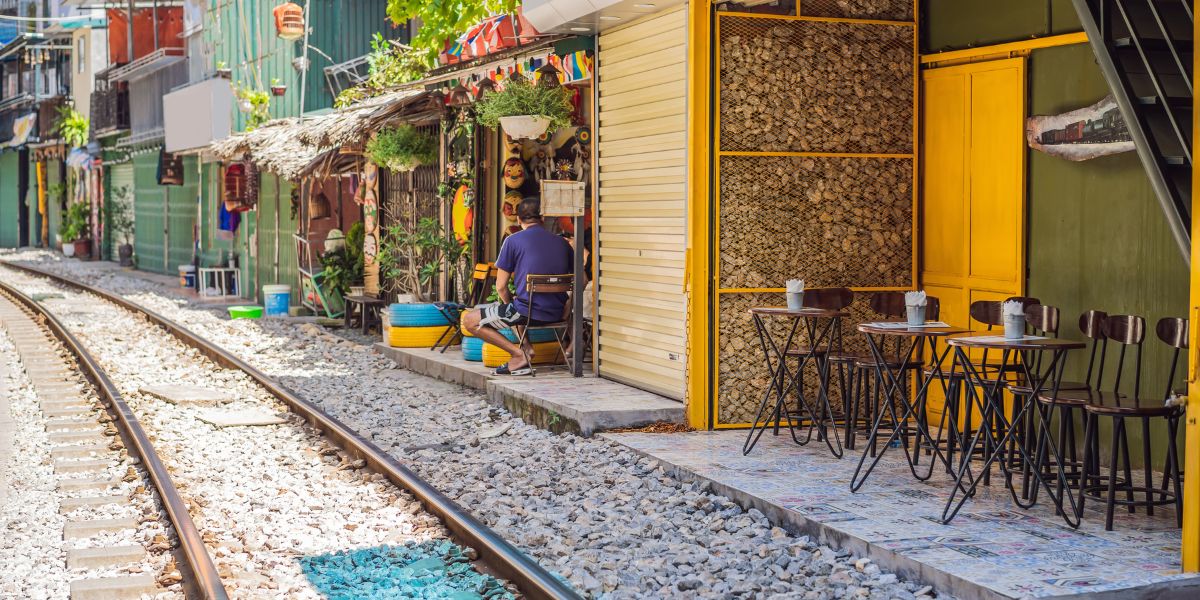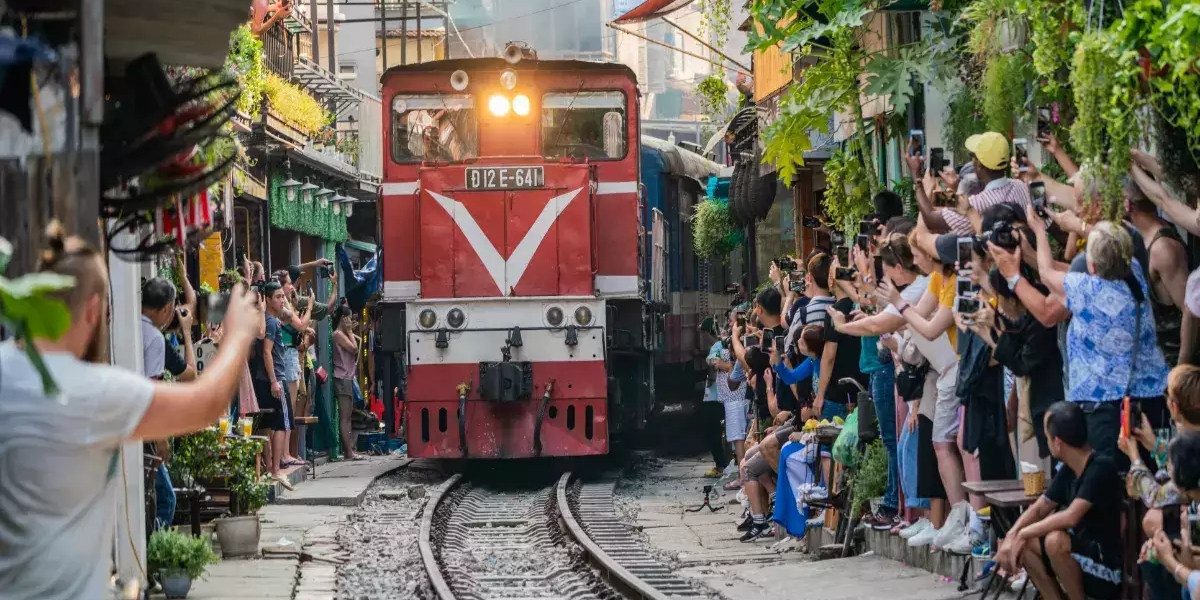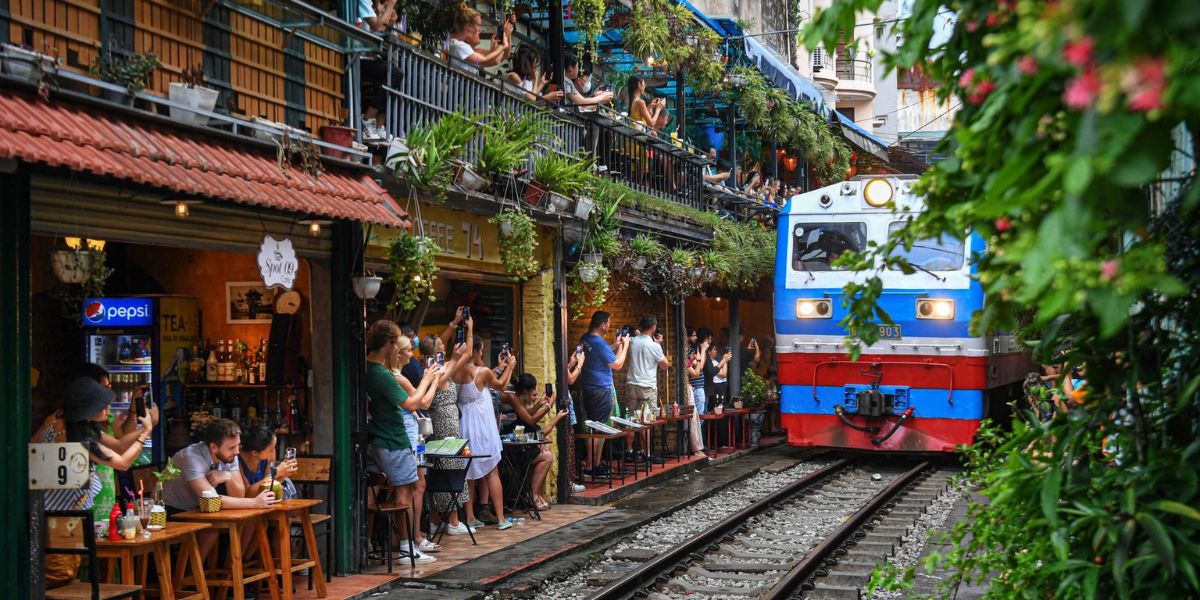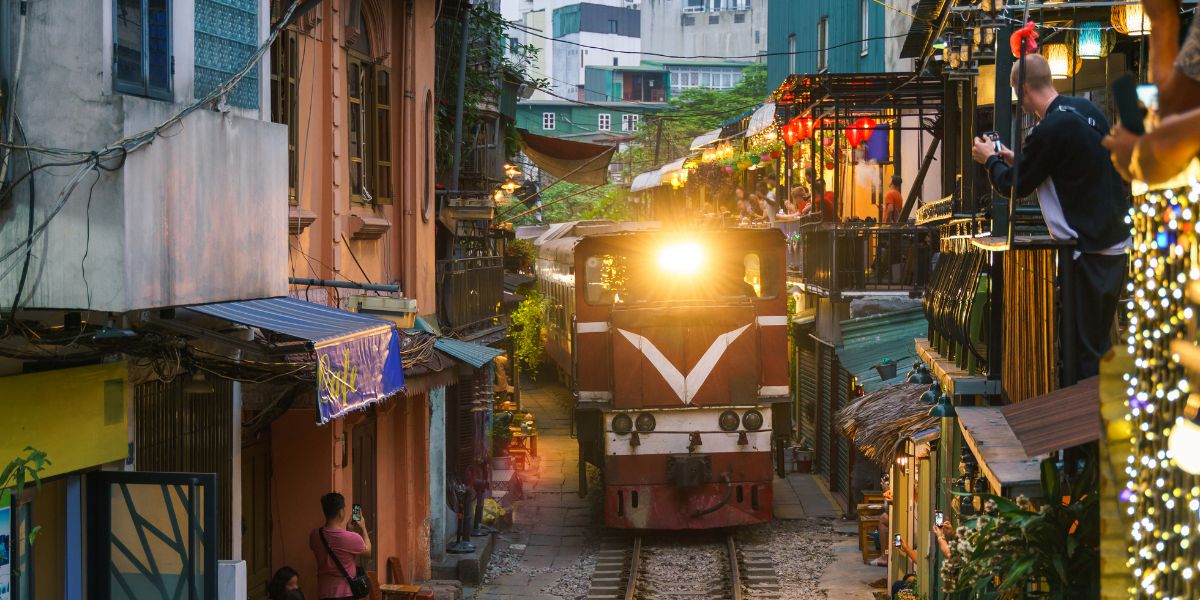Hanoi Train Street, for foreign tourists, is considered a unique and must-see place for those who wish to experience "an authentic Vietnamese capital". This is the most unique train viewing location in the world and one of the most photogenic places on the planet.
Hanoi Train Street, for foreign tourists, is considered a unique and must-see place for those who wish to experience "an authentic Vietnamese capital". This is the most unique train viewing location in the world and one of the most photogenic places on the planet.
What is the address of Hanoi Train Street? What time does the train run? Is the Hanoi train line closed? In the article below you will find updated information about this street.
1. What makes Hanoi Train Street special?
1.1. Indochina's first railway
Going back to the history of Hanoi Train Street, a railway line running through the streets of Hanoi's Old Quarter, dates back to the 20th century during the French colonial era. For many years, this railway line quietly coexisted with the capital, becoming an integral part of its life.
What captivates tourists is its location, traversing residential neighborhoods. Surprisingly, the space between the tracks and the houses is incredibly narrow, just a few steps apart. It almost seems like it could swallow up the surrounding homes.

This section of Hanoi boasts an intriguing architectural blend of old and new buildings. It presents a picturesque scene with various vibrant colors, creating a "vintage" atmosphere throughout the streets.
1.2. The vibrant life on both sides of Hanoi's train tracks
Every day, more than 10 trains pass through the Hanoi railway track, which is only about 1-2 meters away from homes and residents. This makes commuting challenging as the narrow streets of this "train street" are just wide enough for pedestrians or motorcycles, cars cannot access it.
Local people here have spent their entire lives along the Hanoi train street, where the cramped space and the noise and vibrations of passing trains have become familiar. When there are no trains, locals engage in activities such as drying clothes, washing dishes, cooking, or chatting with neighbors—mostly outdoors and on the railway tracks.

However, they are well-versed with the train schedule. When the train horn sounds, life immediately moves away from the tracks for the passing convoy, ensuring a safe passage for pedestrians and homes. Surprisingly, despite the seeming danger, the number of railway accidents in Hanoi is remarkably low.
For those fortunate enough to stroll along the Hanoi train tracks, they may encounter local elders playing chess, women preparing meals with fresh produce, children playing and frolicking, or engaging in conversations with locals to hear about their life stories.
2. Address of Hanoi Train Street?
The Hanoi train street runs from Long Bien Station to the central Hanoi station, passing through residential areas along Phung Hung, Dien Bien Phu, and Le Duan streets.
For the best experience and stunning photographs, you'll need to turn into the spots where the train makes sudden turns without significantly affecting the houses on either side.
You need to head towards the intersection of Dien Bien Phu and Ton That Thiep streets. Then follow Tran Phu and Phung Hung streets until you reach Train Street. It's nestled in Hanoi's Old Quarter and is easy to find by walking along the walls without relying on Google.
After exploring Train Street, you can stop at Phung Hung Street. There are some exceptionally unique murals here that you shouldn't miss, they're known as the "Phung Hung Mural Street".

3. Hanoi train schedule: How to 'catch' trains passing through the street?
It's best to know the schedule of trains passing through the nearby area for the best photos and experiences.
At each specific location, the train schedule may vary. However, in the Phung Hung area, the most picturesque bend, trains typically pass through in the evenings at 7:00 PM, 7:45 PM, 8:30 PM, and 10:00 PM.
If you wish to visit the train street during the day, weekends are the best. Saturdays and Sundays will have more train schedules: 6:00 AM, 9:00 AM, 11:20 AM, 3:20 PM, 5:30 PM, and 6:30 PM.
For more details, refer to the schedule below
|
From Monday to Friday
|
Weekend
|
|
7:00 PM - 7:15 PM
7:45 PM - 8:00 PM
8:45 PM - 9:15 PM
9:30 PM - 10:00 PM
|
8:00 AM - 9:15 AM - 11:30 AM
3:20 PM - 4:30 PM
5:30 PM - 6:00 PM
7:20 PM - 7:45 PM
8:45 PM - 9:15 PM
|
In reality, the schedule is not fixed and often has a delay of about 15 minutes. Therefore, it's better to arrive at least 30 minutes before the estimated time for a better view. Arriving early allows you to choose a coffee and enjoy it while waiting. You can take photos of the railway and houses before the train arrives. It's crucial to follow the instructions of the security to ensure railway safety.
4. Is the Hanoi train street closed?
Since September 2022, the café area along the railway street has been closed to ensure security. Security barriers have been installed, with checkpoints to ensure railway safety due to the hazardous nature of coffee trading which was impacting traffic. As per the official announcement, the railway street cafés in the Phung Hung and Cua Nam areas will be temporarily closed.
Presently, some café establishments along Train Street have reopened, adhering to the commitment to respect railway safety by not engaging in sales or encroaching on the railway corridor. Visitors can sit inside these cafés and restaurants to enjoy coffee while watching the trains pass by. Adhering to the regulations is crucial to avoid accidents. When notified by railway staff or café owners about an approaching train, visitors are requested to move to the safe zones within the establishment, ready to capture the train passing moment on their phones.

Previously, the city had proactively implemented measures such as increasing security personnel around the vicinity to guide and support tourists as well as residents. Additionally, electronic boards displaying schedules and safety instructions were installed to enable visitors to enjoy this exciting experience safely.